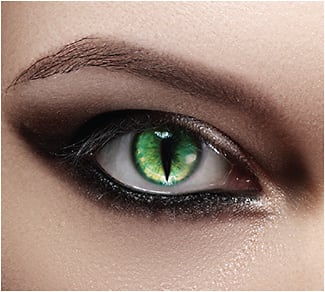Halloween is the perfect time for spooky thrills, but eye problems shouldn’t be one of them and patient education can help prevent that.
Carly Rose, OD, FAAO, of Eyecare on the Square, in Cincinnati, says that she usually sees two patients each fall with eye conditions caused by costume mishaps. More frequently, she gets questions from patients who want to know what brands of lenses and other costume cosmetics are safe for their eyes.
COSMETIC LENS RISKS
Cosmetic lenses that can alter the color and appearance of a person’s eyes are popular at Halloween, so it’s important to educate patients that contact lenses are not cosmetics, but medical devices regulated by the FDA.
The CDC instructs Halloween-goers not to purchase decorative contact lenses from “anywhere that does not require a prescription.” Remind patients that any type of contact lens that is sold without a valid prescription is being sold illegally. Wearing lenses that are not properly fit by an eye care professional may leave the eye more susceptible to scratches or corneal ulcers that can lead to scarring, infection, and permanent vision reduction or loss (see https://bit.ly/3eEdRff for more information).
When asked by patients about what cosmetic lenses to use, Dr. Rose’s main recommendation is to get ones available in prescription. Some online providers offer theater-quality cosmetics available in prescription, but there are also many “standard” soft contact lenses that are available in different colors as well, she says.
For healthy wear and care of cosmetic contact lenses, the CDC instructs wearers to treat them like standard lenses, including never sharing them with others, replacing them as recommended by the eye doctor, and cleaning them with fresh contact lens disinfecting solution every time they are removed. For more advice from the CDC on cosmetic lenses, go to https://bit.ly/3Qx73xi .

AVOID GLITTER
Dr. Rose also advises her patients to steer clear of craft glitter for costuming – it’s sharp corners can cut the cornea. She recommends using facial glitter instead.
This recommendation comes in part from personal experience – one year, she had to dig glitter out of a patient’s eye.
“It was a sparkling surprise when I looked in the slit lamp on 16x mag!” OM



